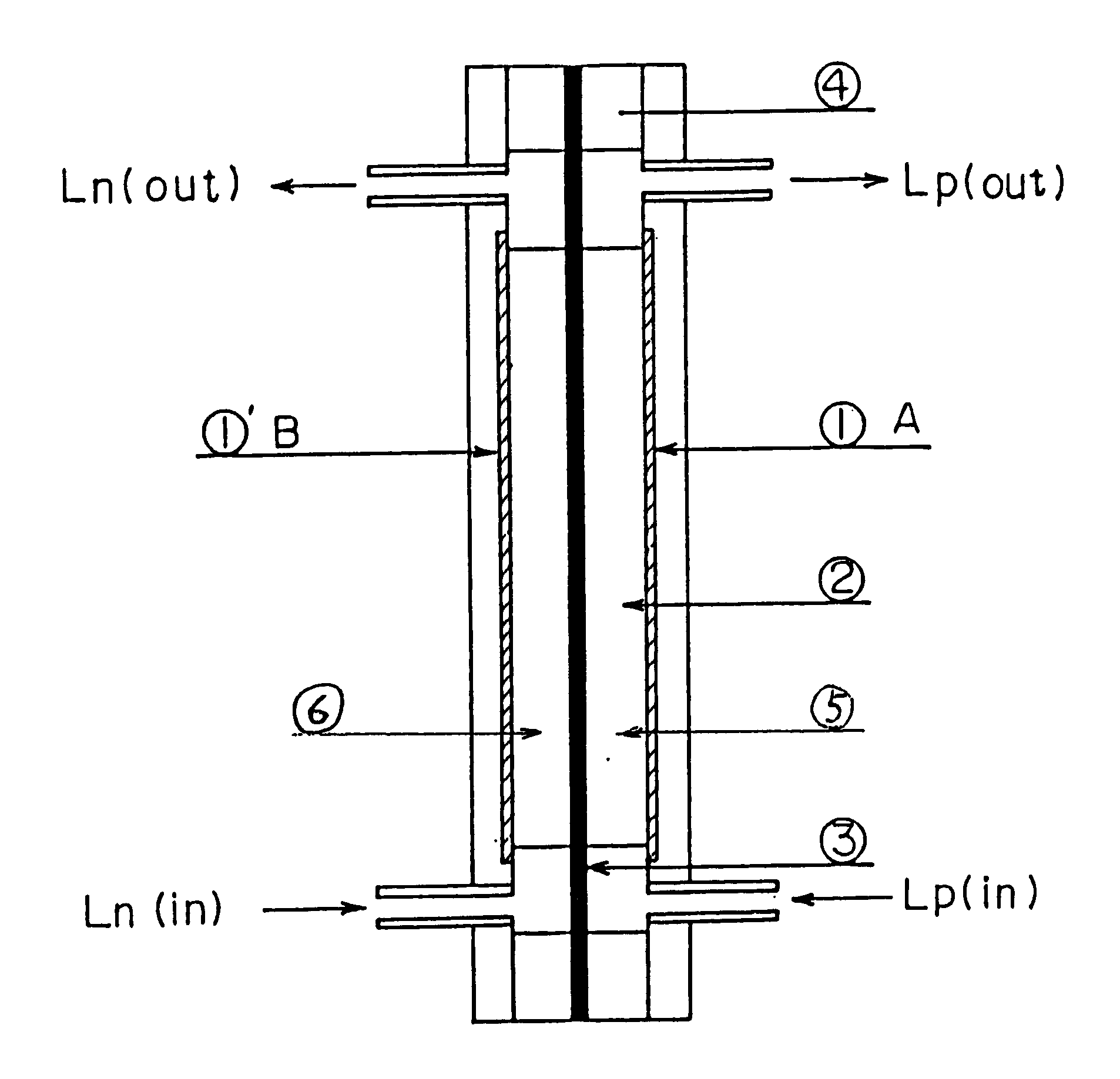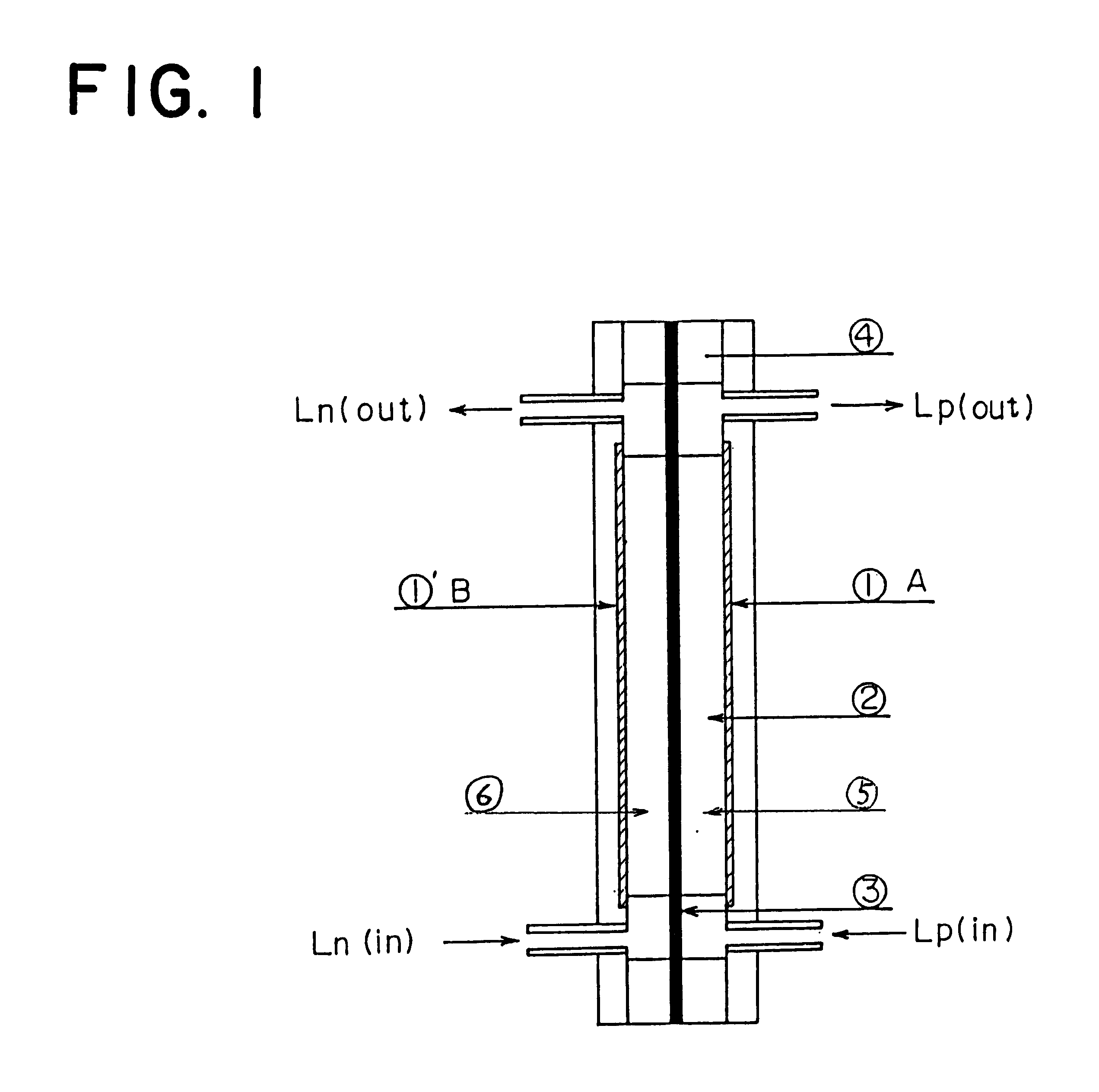Redox flow battery
a redox flow and secondary battery technology, applied in the direction of non-aqueous electrolyte cells, cell components, electrochemical generators, etc., can solve the problems of reducing the operating rate of power plants, increasing atmospheric carbon dioxide concentration, and increasing global warming, so as to improve the potential efficiency, improve the ion selectivity, and reduce the loss of shunt current. the effect of loss
- Summary
- Abstract
- Description
- Claims
- Application Information
AI Technical Summary
Benefits of technology
Problems solved by technology
Method used
Image
Examples
example 2
A redox flow battery of the present invention which employed the same anion exchange membrane as in Example 1 as a membrane was formed in the same manner as in Example 1 except that the liquid level in the storage tank for the negative electrolyte was set 10 cm higher than that in the storage tank for the positive electrolyte and a pipe was provided at the liquid level in the storage tank for the negative electrolyte for returning the electrolyte to the storage tank for the positive electrolyte so that the electrolyte, which had migrated through the membrane from the positive cell to the negative cell and further to the storage tank for the negative electrolyte over the course of charge and discharge, was returned to the storage tank for the positive electrolyte through the refluxing pipe with the aid of the gravity difference between the liquid levels. The battery was subjected to about 120 cycles of continuous charge and discharge under the following conditions while the liquid le...
PUM
| Property | Measurement | Unit |
|---|---|---|
| size | aaaaa | aaaaa |
| size | aaaaa | aaaaa |
| size | aaaaa | aaaaa |
Abstract
Description
Claims
Application Information
 Login to View More
Login to View More - R&D
- Intellectual Property
- Life Sciences
- Materials
- Tech Scout
- Unparalleled Data Quality
- Higher Quality Content
- 60% Fewer Hallucinations
Browse by: Latest US Patents, China's latest patents, Technical Efficacy Thesaurus, Application Domain, Technology Topic, Popular Technical Reports.
© 2025 PatSnap. All rights reserved.Legal|Privacy policy|Modern Slavery Act Transparency Statement|Sitemap|About US| Contact US: help@patsnap.com



